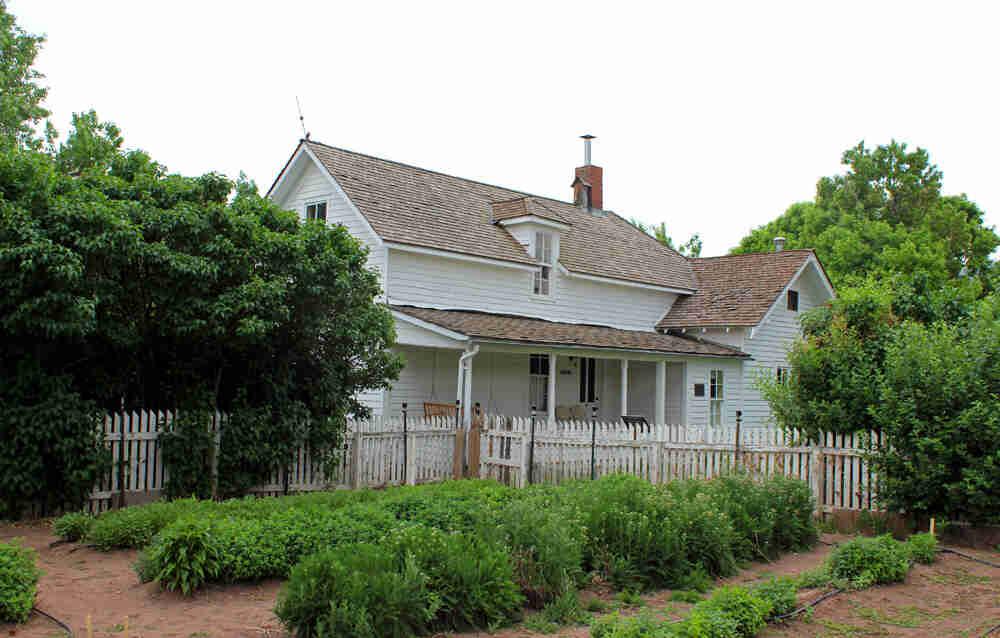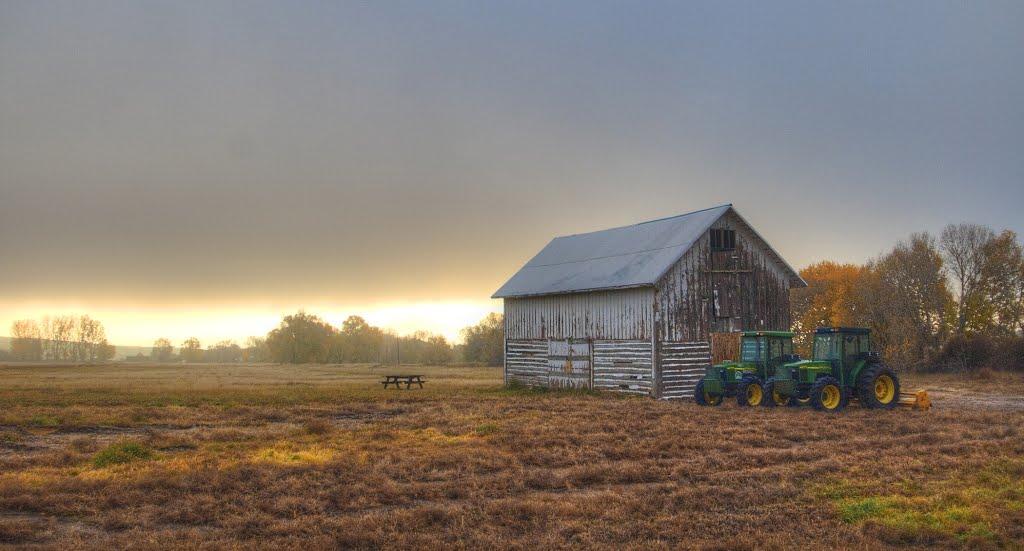Hildebrand Ranch
Full Article
Settled by Frank Hildebrand in 1866, Hildebrand Ranch was a large cattle ranch and farm along Deer Creek southwest of Denver. After remaining in the hands of the Hildebrand family for more than a century, the ranch was condemned by the Army Corps of Engineers in 1971 for the construction of Chatfield Reservoir. The original ranch house and other buildings are now part of Denver Botanic Gardens Chatfield Farms, while Jefferson County Open Space preserves much of the rest of the ranch’s former property.
Early Agriculture on Deer Creek
The German immigrant Frank Hildebrand came to Colorado in the gold rush of 1859. Initially he settled north of Denver, near the junction of Clear Creek and the South Platte River, but in 1864 he sold his farm after a flood ruined his crops. He worked briefly as a freighter before establishing a new farm south of Denver in 1866. Hildebrand chose a grassy location with a log cabin along Deer Creek a few miles west of the South Platte, not far from where Deer Creek exits the foothills.
In his early years at the ranch, Hildebrand worked the farm from spring planting through fall harvest, then went to the mines during the winter. Later he worked full time at the ranch, where he bred cattle and built a three-ditch irrigation system to bring water from Deer Creek to 200 acres of farmland. Around 1880, after Hildebrand married and had two sons, he built two additions to the ranch house, one on each side. Nearby, the family constructed a variety of other ranch buildings, including a bunkhouse for workers and several barns and sheds. The closest town, Littleton, was an eight-mile ride away, so the family was largely self-sufficient. They grew wheat as a cash crop plus other crops for the family and the livestock. Occasionally they traveled to Littleton to trade surplus crops and dairy for staples such as sugar, salt, and pepper.
Hildebrand Ranch stayed in the family for more than 100 years and gradually expanded to at least 2,000 acres and 600 head of cattle. After Frank Hildebrand died in 1914, his oldest son, Francis, took over the farm. Francis Hildebrand lived there his whole life, and when he died in 1943, the ranch passed to his second daughter, Florence, and her family.
Chatfield Reservoir and After
The South Platte River flooded Denver on June 16, 1965, killing thirteen people and causing millions of dollars of damage. The flood spurred the Army Corps of Engineers to act on an existing flood-control plan that involved damming the South Platte just north of its confluence with Deer Creek. In 1971 the secretary of the army condemned about 334 acres of Hildebrand Ranch for the construction of Chatfield Reservoir.
Ironically, the condemnation of Hildebrand Ranch for Chatfield Reservoir probably saved the ranch from redevelopment as the Denver suburbs expanded south. The reservoir ultimately occupied only part of the land that was condemned for its construction, leaving Hildebrand Ranch about a mile west of the water. In 1973 the city of Denver leased 750 acres of that land from the federal government. About one-tenth of Denver’s lease, including the main Hildebrand Ranch buildings, became part of Denver Botanic Gardens’ arboretum and environmental study area, now known as Denver Botanic Gardens Chatfield Farms.
In 1975 Hildebrand Ranch was listed on the National Register of Historic Places. In the 1990s the State Historical Fund provided grants to erect new interpretive signs at the ranch.
Jefferson County Open Space
After the Army Corps of Engineers condemned part of Hildebrand Ranch for Chatfield Reservoir, about 1,650 acres of the ranch still remained in private hands. The last Hildebrand to live on the property left in the 1970s, but the land included a historic irrigation ditch from 1868, a two-story Dutch-style barn, several other ranch structures, and some unexcavated prehistoric sites. In 2001 Jefferson County Open Space bought 1,450 acres of the land and established Hildebrand Ranch Park just west of Chatfield Farms and south of Deer Creek. As of 2016, the park offers visitors a parking area and a loop trail.




